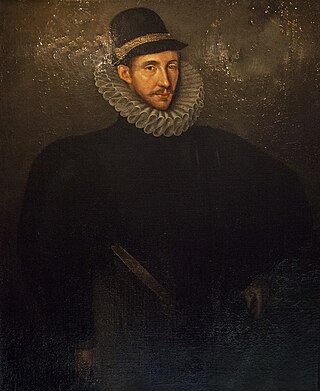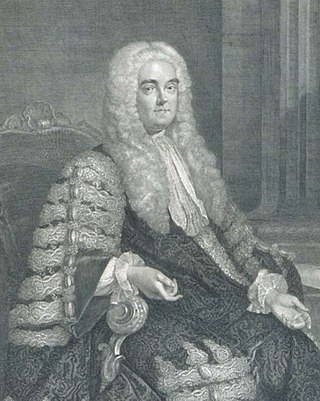

Sir Richard Verney (1563 – 7 August 1630) of Compton Verney in Warwickshire, England, was a landowner and politician who sat in the House of Commons at various times between 1589 and 1614.


Sir Richard Verney (1563 – 7 August 1630) of Compton Verney in Warwickshire, England, was a landowner and politician who sat in the House of Commons at various times between 1589 and 1614.
He was the eldest son of George Verney (d. 1574) of Compton Verney, by his wife Jane Lucy, daughter of William Lucy of Charlecote in Warwickshire.
In 1574, aged 11, he inherited his deceased father's estates. He entered Gray's Inn in 1582 to train as a lawyer and served as a Justice of the Peace from about 1584 when he came of age aged 21. In 1589 he was elected as a Member of Parliament for Warwickshire. He was Sheriff of Warwickshire for 1590–1, during which time he became liable for a penalty of £1,000 due to the escape of an important prisoner under his custody. He was Commissioner for Musters by 1597. In 1601 he was elected as an MP for West Looe in Cornwall. He was knighted in 1603 and was Sheriff of Warwickshire again for 1604–5. He may have been an MP for Warwickshire again during the 1604 to 1611 Parliament, and was elected an MP for Warwickshire in 1614. [2]

On 29 October 1582 at Alcester he married Margaret Greville (d. 26 March 1631), (later from 1628 suo jure 6th Baroness Willoughby de Broke) daughter of Fulke Greville, 4th Baron Willoughby de Broke (1536–1606) of Beauchamp Court, Alcester, Warwickshire, and sister and heiress of Fulke Greville, 1st Baron Brooke, 5th Baron Willoughby de Broke (1554–1628), known before 1621 as Sir Fulke Greville the poet, dramatist, and statesman. Verney was said to be an affectionate family man and a good friend and spent much of his time in the social round of visits and entertainments. He was often at Beauchamp Court, the home of his brother-in-law Sir Fulke Greville. By his wife he had four sons and four daughters, including:
He died in 1630 at the age of 66 after a short illness and was buried in the chapel at Compton Verney, [2] where survives his monument by Nicholas Stone, [1] master-mason to King Charles I, comprising alabaster recumbent effigy, with that of his wife, on a chest tomb.

Baron Willoughby de Broke is a title in the Peerage of England. It was created by writ in 1491 for Sir Robert Willoughby, of the manor of Broke, part of Westbury, Wiltshire, who according to modern doctrine was de jure 9th Baron Latimer. On the death of his son, the two baronies fell into abeyance. Around 1535, the abeyance was naturally terminated when the second Baron's granddaughter Elizabeth, who had married Sir Fulke Greville, became the only surviving co-heir, passing her claim to her son Sir Fulke Greville, father of the poet of the same name. The title stayed in the Greville family until after the death of the 5th Baron, when it passed to his sister, Margaret Greville, the wife of a Verney. Thereafter it remained in the Verney family. The Barons Willoughby de Broke remain heirs to the ancient Barony of Latimer.
Baron Brooke is a title in the Peerage of England. It was created in 1621 and was absorbed into the Earldom of Warwick in 1759.

Fulke Greville, 1st Baron Brooke was an Elizabethan poet, dramatist, and statesman who served in the House of Commons at various times between 1581 and 1621, when he was raised to the peerage.

The Verney family purchased the manor of Middle Claydon in Buckinghamshire, England, in the 1460s and still resides there today at the manor house known as Claydon House. This family had been seated previously at Fleetmarston in Buckinghamshire then at Pendley in Hertfordshire. It is not to be confused with the unrelated but also ancient and prominent Verney family of Compton Verney in Warwickshire.

Compton Verney is a parish and historic manor in the county of Warwickshire, England. The population taken at the 2011 census was 119. The surviving manor house is the Georgian mansion Compton Verney House.

Robert Greville, 2nd Baron Brooke was a radical Puritan activist and leading member of the opposition to Charles I of England prior to the outbreak of the First English Civil War in August 1642. Appointed Parliamentarian commander in Staffordshire and Warwickshire, he was killed by a Royalist sniper at Lichfield on 2 March 1643.
The title Baron Latimer or Latymer has been created, by the definitions of modern peerage law, four times in the Peerage of England. Of these, one was restored from abeyance in 1913; one is forfeit; the other two are dormant, although their heir is well known.

Compton Verney House is an 18th-century country mansion at Compton Verney near Kineton in Warwickshire, England. It is located on the west side of a lake north of the B4086 about 12 miles (19 km) north-west of Banbury. Today, it is the site of the Compton Verney Art Gallery.

Richard Greville Verney, 19th Baron Willoughby de Broke was a British peer and conservative politician.

Sir John Verney, of Compton Verney, Warwickshire, was a British barrister, judge and Tory and then Whig politician who sat in the House of Commons from between 1722 and 1741.

Richard Verney, 11th Baron Willoughby de Broke and de jure 19th Baron Latimer was a peer in the peerage of England, High Sheriff and Member of Parliament.
Greville Verney, 8th Baron Willoughby de Broke and de jure 16th Baron Latimer was a peer in the peerage of England.

Greville Verney, 7th Baron Willoughby de Broke and de jure 15th Baron Latimer of Compton Verney in Warwickshire, England, served twice as a Member of Parliament for Warwick, in 1614 and 1621.
Margaret Greville, 6th Baroness Willoughby de Broke and de jure 14th Baroness Latimer was a peeress in the peerage of England.

Sir Fulke Greville of Beauchamp Court near Alcester in Warwickshire, was an English gentleman.

Elizabeth Willoughby, 3rd Baroness Willoughby de Broke, de jure 11th Baroness Latimer was an English noblewoman and wife of Sir Fulke Greville.
Sir Henry Compton KB was an English politician who sat in the House of Commons at various times between 1601 and 1640.

Richard Neville, 2nd Baron Latimer KB of Snape, North Yorkshire, was an English soldier and peer. He fought at the battles of Stoke and Flodden.
Sir Robert Southwell (1563–1598), of Woodrising, Norfolk, was an English politician.

Hayne in the parish of Stowford in Devon, is an historic manor, about 11 miles (18 km) south-west of Okehampton. The surviving manor house, a Grade II* listed building known as Hayne House, was rebuilt in about 1810 by Isaac Donnithorne, who later adopted the surname Harris having married the heiress of Harris of Hayne.